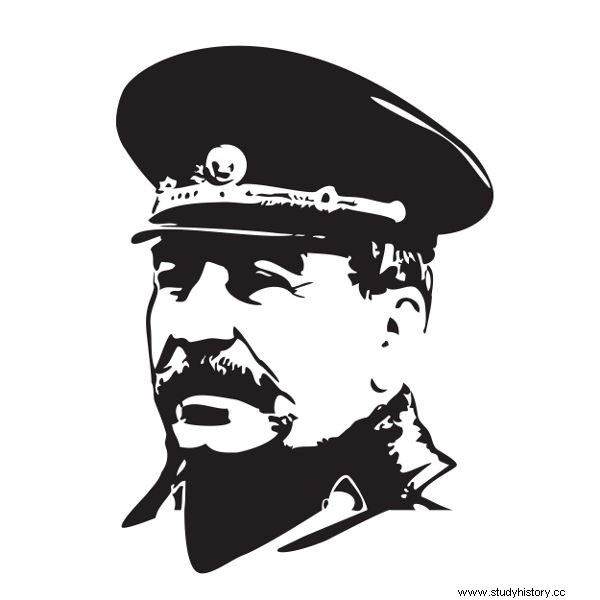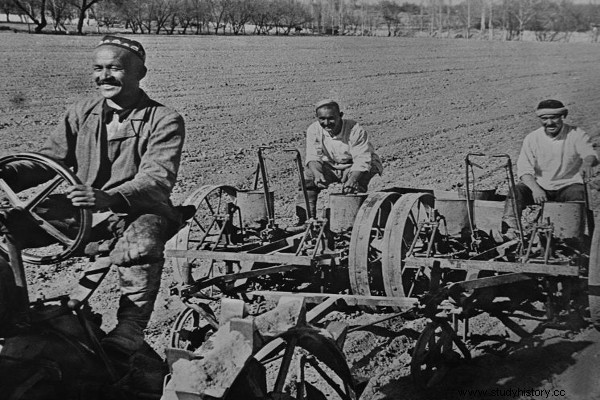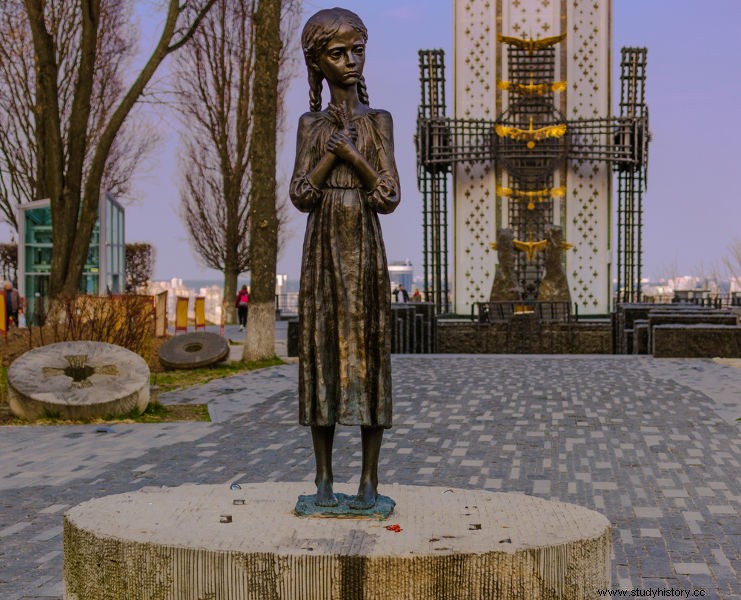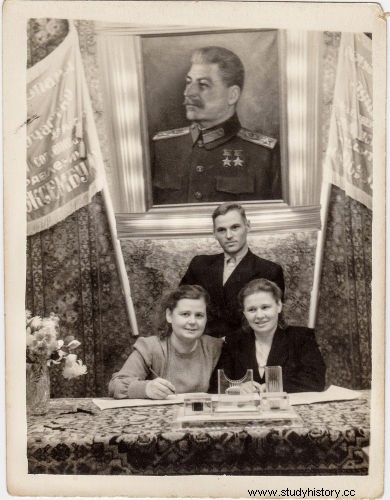The Stalinism is the name given to the totalitarian regime built by Josef Stalin in the Soviet Union (USSR), between 1927 and 1953. Josef Stalin was a member of the Communist Party of the Soviet Union (CPSU) and, after taking power, carried out radical transformations and imposed a regime of terror, that persecuted minorities and opponents.
The Stalinist regime managed to industrialize the Soviet Union, turning that country into a great power. He also mobilized the rresistance against the Nazis , during the Second World War. After Stalin's death, the crimes committed by the Soviet state were denounced by the CPSU itself.
Login also :Discover the history of one of Russia's main cities
Building Stalinism
Stalinism, as an authoritarian regime, was only really implemented when Stalin assumed undisputed command of the CPSU and the Soviet Union. This took place in 1927 and began a period of four years of internal disputes for the command of the party and the country. This power struggle was waged by Stalin , Trotsky , Zinoviev and Kamenev .

It all started with
Supported by many CPSU members, Stalin secured Soviet power with the expulsion of Trotsky, Zinoviev and Kamenev of the party. Stalin's opponents ended up being persecuted and dead during the 1930s (in the case of Zinoviev and Kamenev). Trotsky was killed by a Soviet spy in 1940.
Industrialization
One of Stalin's first major measures was to encourage industrialization of the Soviet Union. This government plan was put in place of the New Policy Economic (NEP), plan instituted by Lenin to promote the opening of the Soviet economy.
Stalin put an end to the market economy and planned the economy, that is, the Soviet economy, came to be entirely controlled by the state. This is how the Five Year Plan was designed , in 1929. This plan stipulated goals that had to be reached within five years; after that, there would be a new five-year plan with new goals.
This first five-year plan stipulated goals such as increasing industrial production by 180%, electricity generation by 335% and the availability of labor for industry by 35% |1| . The Soviet government claimed that these goals were achieved in 1932, so the first five-year plan was completed in four years.
This economic plan created great pressure on leaders and workers . The government demanded that the targets be achieved at all costs, which created tense work environments as well as exhausting workers.
The industrial production of the Soviet Union increased considerably, as did the number of workers involved in the industry. The first five-year plans highlighted areas of heavy industry, such as steel and metallurgy, and also prioritized the production of electricity.
Login also :Understand the main events of the Russian Civil War
Soviet agriculture

Along with the Five Year Plan, Stalin launched a profound reform in Soviet agriculture:the collectivization da land . With this reform, Stalin decreed theabolition of private property in rural areas, and the productive lands of the Soviet Union would gradually come under state control. In these lands, the State created farms collectives and appointed peasants to work on these sites.
The land collectivization is understood by historians such as Timothy Snyder as an attempt by Stalin to impose control over the largest social class in the USSR:the peasants|2| . Furthermore, Stalin wanted to do away with the social class of rich peasants, called the kulaks . This resulted in the transport of thousands of kulaks for regions such as the Urals and Siberia.
There was resistance to the collectivization of land, since the State took possession of the land and everything that was on it, such as buildings, what was produced, the tools used in work and even the pack animals and herds. The groups that resisted were treated with violence, being executed or sent to the gulags (forced labor camps).
By March 1930, about 71% of Soviet land had already been collectivized. Workers assigned to work in these places were stuck with them and could not abandon them under any circumstances|3| . Resistance to collectivization was enormous, especially in Ukraine. More than one million acts of resistance were held there in 1930|4| .
Login also :Discover the biggest battle fought between Germans and Soviets in World War II
-
Great Hunger
The collectivization of the land destabilized the functioning of Soviet agriculture and caused production to fall. This generated lack of food, which caused widespread famine across the country. In places like Kazakhstan, famine killed millions of people. Ukraine, in turn, ended up being marked as the place that suffered the most from the consequences of collectivization.
The targets set by the Soviet government for collective farms in Ukraine were too high and, in addition, agricultural production in Ukraine in 1932 dropped significantly. With famine spreading, the Stalinist government took measures that made the situation even worse.

With production quotas not met, the Soviet government started demanding the return of seeds and, some time later, also started demanding meat quotas for those who did not reach the production quota. Peasants were also banned from moving to cities (which many did to get access to food).
The result was tragic and resulted in millions of deaths in Ukraine. Many historians argue that this famine was purposely caused by the Soviet government to weaken Ukrainian nationalism and the resistance to collectivization that existed there. Historians speak of about 5 million dead of starvation during the Great Famine, which is known in Ukraine as the Holodomor.
Purges
In addition to all the violence committed during collectivization and the persecution of the kulaks, Stalinism was also marked by the persecution ethnic minorities and by Stalin's paranoia, who imagined that everyone was conspiring to overthrow him. The 1930s were marked by purges, especially the period 1937-1938, which housed the Grande Purge .
Purges targeted diverse groups. The first major targets were ethnic minorities. Stalin openly persecuted ethnic groups with strong nationalist movements and this led to thousands of people being sent to forced labor camps or summarily executed.
The Polish were one of the main groups persecuted by Stalinism. Timothy Snyder says that 1/8 of the nearly 700,000 victims of the Great Terror were Poles . This suggests that some 85,000 Poles were killed at the behest of the Soviet state. Other minorities, such as Belarusians and Lithuanians, were also victims of Stalinist violence.
The purges also turned against opponents, kulaks , party and government members who allegedly rivaled Stalin, and even military personnel. The hallmark of Stalinist violence was to execute its victims with a shot in the back of the head. In all, between 10 and 20 million people were killed by Stalinism and up to 13 million were imprisoned in the gulags.
Login also :The massacre of over 20,000 Poles carried out by the USSR in World War II
End of Stalinism
Stalinism as a regime ended with the death of Stalin , in March 1953, victim of a stroke. At this point, Stalin was at the height of his popularity, mainly because of his leadership in the fight against Nazi Germany during World War II. Stalin led the entire country's resistance and prevailed as the victor in 1945.
Stalin, however, was largely to blame for the initial disasters in the fight against the Germans. This was because the purges had deprived the Red Army of important commanders, and when fighting broke out in 1941, Soviet commanders proved incompetent. Only after months, competent soldiers were promoted to command positions.

Stalin also sinned by leaving the Soviet border unprotected. When the Germans invaded the USSR, they found it enormously easy to advance through Soviet territory. From 1942 onwards, with the increase in Soviet industrial capacity and the increase in the number of available soldiers, the country began to impose itself on the Germans.
Between 1944 and 1945, Stalin demanded that the attack on Berlin be carried out only by the Soviets as a way of avenging all the destruction caused by the Germans in the USSR. The Soviets mobilized 2.5 million troops to attack Berlin and, at the turn of April to May 1945, they defeated the Nazis definitively.
From 1945 onwards, the cult of Stalin increased and he came to be seen as a great national hero . Before he died, Stalin still interfered in the Korean War and the Chinese Revolution and continued the purges in the USSR. After his death, the next ruler of the USSR, Nikita Khrushchev, denounced Stalin's crimes and put an end to the personality cult of the former Soviet leader. For more details on Josef Stalin's life, read:Josef Stalin:biography, government, death.
Notes:
|1| SIEGELBAUM, Lewis. The construction of Stalinism. In.:FREEZE, Gregory L. (org.). Russian history. Lisbon:Editions 70, 2017, p. 366.
|2| SNYDER, Timothy. Lands of Blood:Europe between Hitler and Stalin. Record:Rio de Janeiro, 2012, p. 51.
|3| Ditto, p. 55.
|4| Ditto, p. 57.
Image credits:
[1] Tanya Kalian and Shutterstock
[2] E_Photos and Shutterstock
